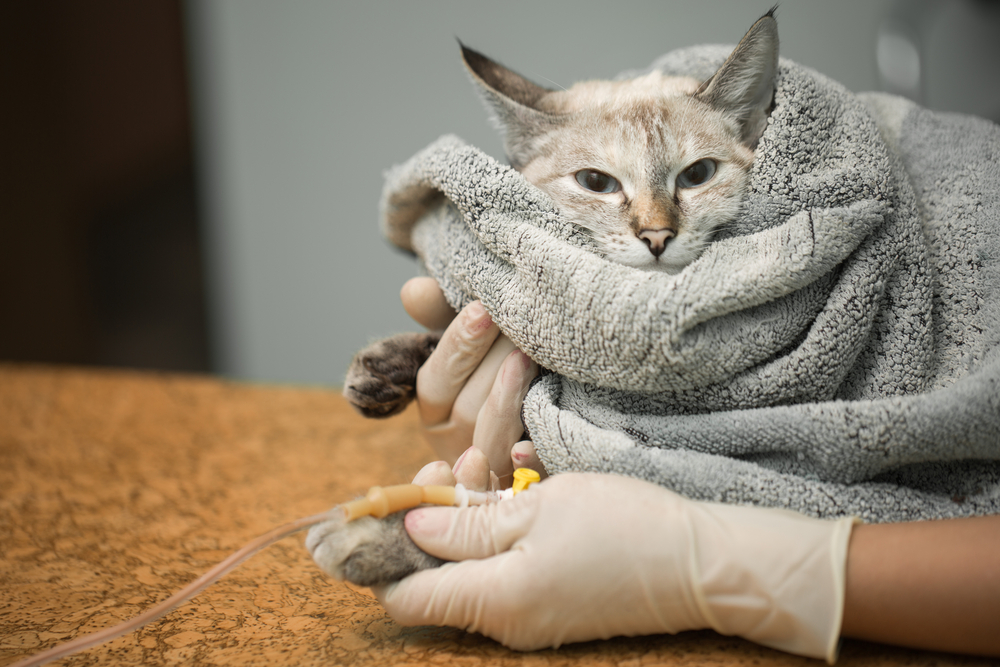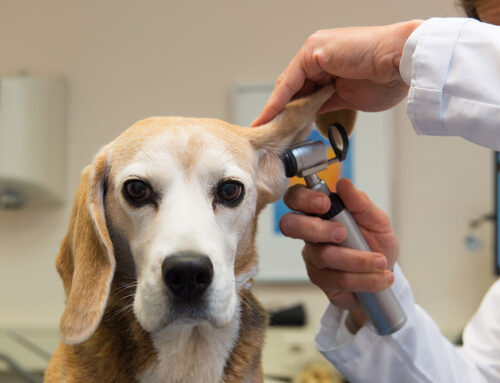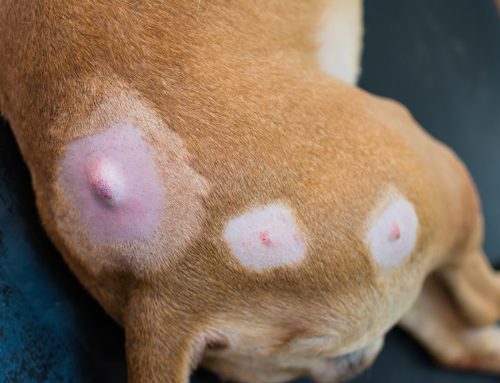When faced with an emergency, do you keep a cool head, or wail and panic? In any emergency, whether people or pets are involved, every second counts. Unfortunately, pets are prone to getting into mischief as soon as you walk out the door, which means they may be subjected to a toxin for an unidentified length of time. Your home, garage, and garden are filled with hidden poisons that can harm your pet, and, if you don’t notice exposure soon enough, your furry pal can suffer serious health consequences.
By following a set plan in an emergency poisoning situation, you can minimize health issues, and give your pet the best chance at a positive outcome. So, what steps should you take as soon as you notice your pet has contacted a toxic substance? The following steps will help ensure your furry pal suffers from the least amount of toxin damage.
Step 1: Identify the toxic substance your pet ingested
Many people believe that after realizing their pet ingested a toxic substance, the first step is to induce vomiting. But, by attempting to make your pet vomit, you may actually do more harm than good. Before taking any action, correctly identify the hazard your pet was exposed to, and have the packaging or information handy.
Step 2: Call an animal poison control center
Before calling our hospital, you need to contact an animal poison control center. While we have a general knowledge of common toxins, an animal control hotline, such as the ASPCA Animal Poison Control Center (APCC), has veterinary toxicologist specialists who possess a much greater understanding of toxins and how your pet should be treated. The veterinary toxicologist you speak with will inform you whether you need to attempt to make your pet vomit, or if you need to head directly toward emergency treatment.
Step 3: Call Palm City Animal Medical Center
After the pet-poison hotline guides you through your first steps, call our hospital. We provide emergency care during regular business hours, and on an on-call basis after hours. When you contact our office, have your pet’s case number handy. We will use that number when calling the same pet-poison hotline to speak with a toxicologist regarding your pet’s case. The veterinary toxicologist will give us step-by-step instructions to ensure your pet receives the best treatment and prognosis. With their specialized knowledge base, they will inform us about the diagnostic tests we should run, whether or not we should induce vomiting, medications we should give or avoid, length of treatment, follow-up care, and your pet’s prognosis.
Step 4: Safely arrive at our Palm City Animal Medical Center
By the time you arrive at our hospital, we will have formed our diagnostic and treatment plan, based on the veterinary toxicologist’s advice. Ready to leap into action, we will immediately begin battling the toxic substance your pet was exposed to, to ensure the best outcome. Depending on the toxin, the length of time your pet was exposed, and her health status, we may need to hospitalize her overnight or for several days, to return her to full health.
Step 5: Return to Palm City Animal Medical Center for follow-up care
Many pets who have been exposed to toxins require some follow-up care, often in the form of repeated blood work panels. For example, dogs who have ingested anticoagulant rodenticides will need to return to check their clotting factors, to ensure they do not need additional vitamin K supplementation. Many toxins can affect your pet’s organ function, so we like to monitor kidney and liver values after a toxic event to ensure your furry pal continues to improve, with no lasting damage.

Important tips to remember if your pet is exposed to a toxin
If your dog has eaten a bar of baker’s chocolate, or your cat has gnawed on your Easter lily centerpiece, you are likely in a panic. But, during such a stressful time, remember the following important tips to prevent doing more harm than good:
- Never induce vomiting with corrosive-chemical ingestion, such as oven cleaners, drain cleaners, batteries, or lime-removal products, as these can cause more damage to the esophagus.
- Never induce vomiting if your pet has ingested hydrocarbons or petroleum distillates, such as kerosene, gasoline, or motor oil. These oily substances are easily inhaled into the lungs, causing a severe aspiration pneumonia.
- Never attempt to induce vomiting in cats, because no products are safe for home.
- In dogs, you can induce vomiting if:
- The substance ingested was poisonous
- The toxin was ingested less than an hour ago
- Your dog is not showing signs of poisoning
- Your dog is healthy, and not at risk of inhaling vomit into her lungs
- Contact us for a proper hydrogen peroxide dose to make your dog vomit, if necessary.
- Use only fresh, 3% hydrogen peroxide to induce vomiting in your dog, and avoid mustard, salt, syrup of ipecac, and sticking your finger down her throat.
It’s important that you know that emergency care at Palm City Animal Medical Center doesn’t stop at the end of the business day. For after-hours emergency care, we always have a veterinary professional available for phone consults to determine the severity of your pet’s situation. If your pet has come in contact with a toxic substance, contact us for assistance, day or night.








Leave A Comment